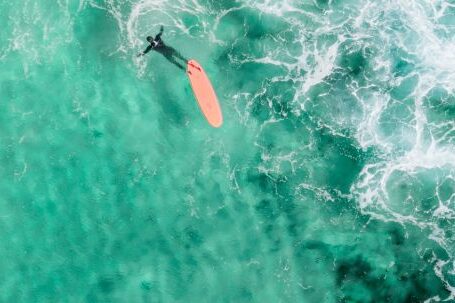Diving is an exhilarating sport that allows individuals to explore the underwater world and witness the beauty of marine life up close. Whether you are a beginner or an experienced diver, mastering the basic techniques is essential for a safe and enjoyable diving experience. In this article, we will delve into the key techniques that every diver should master.
Proper Buoyancy Control
Buoyancy control is one of the fundamental skills in diving. It allows divers to maintain their desired depth and hover effortlessly in the water. To achieve proper buoyancy control, divers must learn to control their breathing and adjust their weight distribution. By inhaling slowly and deeply, divers can ascend, while exhaling allows them to descend. Additionally, divers can fine-tune their buoyancy by adding or releasing air from their buoyancy compensator device (BCD).
Clearing the Mask
Clearing the mask is an essential skill that every diver must master. It involves removing water from the mask when it gets flooded, ensuring clear vision underwater. To clear the mask, divers need to exhale through their nose while simultaneously tilting their head back slightly. This technique forces the water out through the bottom of the mask. It may take some practice to perfect, but once mastered, it becomes second nature.
Equalizing the Ears
Equalizing the ears is crucial to prevent discomfort and potential injuries while descending to greater depths. As divers descend, the surrounding pressure increases, which can cause discomfort or even pain in the ears. To equalize the ears, divers should pinch their nose and gently blow while keeping their mouth closed. This technique helps to equalize the pressure between the outside environment and the inner ear.
Proper Finning Techniques
Efficient finning techniques are essential for conserving energy and maneuvering underwater. A common technique is the flutter kick, where divers move their legs in a continuous up and down motion. Another technique is the frog kick, which involves bending the knees and kicking both legs outwards simultaneously. Mastering these finning techniques allows divers to move smoothly through the water without disturbing the marine life.
Navigating Underwater
Navigating underwater is a skill that becomes increasingly important as divers explore new dive sites. To navigate effectively, divers can use a compass, visual landmarks, or natural navigational aids such as rock formations or coral reefs. It is crucial to maintain a sense of direction and regularly check the compass to avoid getting disoriented. By mastering navigation techniques, divers can explore new dive sites confidently and safely.
Emergency Procedures
Although diving is generally a safe activity, it is essential to be prepared for any emergencies that may arise. Divers should familiarize themselves with emergency procedures such as buddy breathing, which involves sharing a single regulator with a fellow diver in case of air supply issues. Additionally, divers should practice controlled ascents and safety stops to prevent decompression sickness. Being knowledgeable about emergency procedures and practicing them regularly can save lives in critical situations.
In conclusion, mastering the basic diving techniques is essential for a safe and enjoyable diving experience. By focusing on proper buoyancy control, clearing the mask, equalizing the ears, using efficient finning techniques, navigating underwater, and being prepared for emergencies, divers can enhance their skills and confidence in the water. Remember, practice makes perfect, so dedicate time to honing these techniques and enjoy the wonders that lie beneath the surface.





